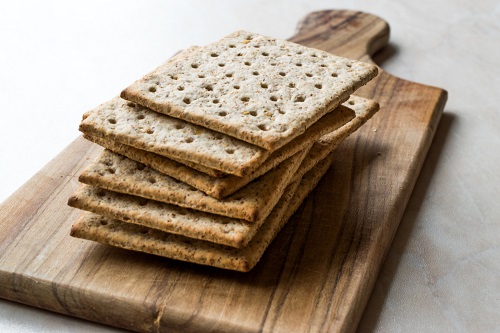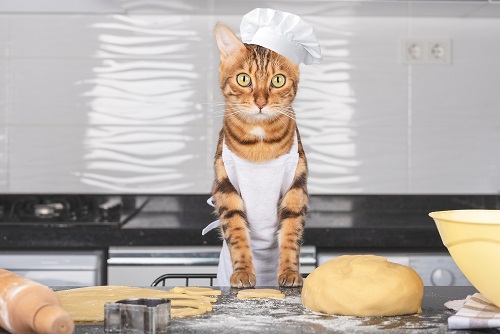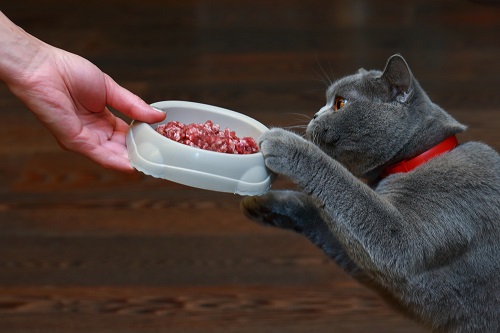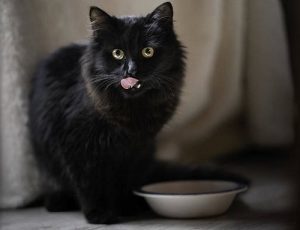Can Cats Eat Graham Crackers? Find the answer and learn about the risks of feeding human snacks to felines.
Picture this: you are sitting on the couch, enjoying a quiet evening with a box of graham crackers by your side. Suddenly, out of nowhere, your kitty emerges from the shadows, eyes wide with curiosity. Before you toss it a piece, a question pops up in your head: “Can Cats Eat Graham Crackers?”. In this article, we will answer your question and explore the curious relationship between cats and graham crackers.
Can Cats Eat Marshmallows? Find out here
What Are Graham Crackers?

Graham crackers are sweet, lightly flavored biscuits made from whole wheat flour, sugar, and other ingredients. They were first invented in the early 19th century by Sylvester Graham, a Presbyterian minister and health reformer. Graham crackers were originally intended as a health food and were meant to be a part of a diet that avoided processed foods and emphasized whole grains. Today, graham crackers are a popular snack food that can be enjoyed on their own or used as an ingredient in various recipes, such as pie crusts or s’mores.
Can Cats Eat Graham Crackers?
While graham crackers are not toxic or poisonous to cats, they are not an ideal food item for them either. Felines are obligate carnivores, meaning their digestive systems are primarily designed to process animal-based proteins and fats. While they can digest some carbohydrates, the feline gut is not well-equipped to handle large amounts of grain-based products like graham crackers. Additionally, these crackers often contain ingredients that are not cat-friendly.
Risks Of Feeding Graham Crackers To Cats

- Digestive Upset: Cats have sensitive digestive systems. Feeding them graham crackers can lead to digestive upset, including vomiting and diarrhea.
- Nutritional Imbalance: Graham crackers do not provide significant nutrients to cats, and consuming them can cause nutritional imbalances in felines.
- Excessive Carbohydrate Intake: Graham crackers are primarily made from whole wheat flour, a carbohydrate source. Feeding cats excessive amounts of carbohydrates can lead to weight gain, obesity, and related health issues.
- Added Sugars: Many graham crackers contain added sugars, which are not beneficial to a cat’s health. Excessive sugar consumption can contribute to dental problems, weight gain, and potential complications such as diabetes.
- Allergies: Cats can have allergies or intolerances to certain ingredients found in graham crackers, such as wheat or other grains. Feeding them these snacks can trigger allergic reactions or gastrointestinal issues.
- Potential Choking Hazard: The texture of graham crackers, especially when dry and brittle, can pose a choking hazard to cats.
Can Cats Eat Other Types Of Crackers?
Cats should not be fed crackers on a regular basis as they do not provide balanced nutrition for feline dietary needs. However, some types of crackers may be less harmful to kitties than others.
Saltine crackers, for example, are low in fat and sugar compared to others and may be given to cats in moderate quantities as an occasional treat. However, crackers that contain high amounts of salt, spices, or other seasonings should be avoided. As they may cause digestive upset or allergic reactions in some cats.
Offer Treats Safely

If you want to offer your cat a treat, here are some tips on how to do so safely:
- Choose treats that are specifically formulated for cats: They are designed to meet your cat’s nutritional needs and are less likely to upset its stomach.
- Offer treats in moderation: Treats should make up no more than 10% of your cat’s daily calorie intake. Overfeeding treats can lead to weight gain, obesity, and related health issues.
- Introduce new treats slowly: When introducing a new treat to your furball, do so gradually and in small quantities. This will help prevent digestive upset and allow your cat’s digestive system to adjust.
- Watch for signs of digestive upset: Keep an eye on your feline after giving it a treat to see if it experiences any signs of digestive upset. If it does, consult with the vet.
- Use treats as a form of positive reinforcement: Use treats as a reward for good behavior to strengthen the bond between you and your feline.
Can Cats Eat Graham Crackers? Quick Takeaways!
- Graham crackers are sweet biscuits made from whole wheat flour, sugar, and other ingredients invented in the early 19th century as a health food by Sylvester Graham.
- While graham crackers are not toxic to cats, they are not ideal for them.
- Risks of feeding graham crackers to felines include digestive upset, nutritional imbalance, excessive carbohydrate intake, added sugars, allergies, and potential choking hazards.
- To safely offer your cat a treat, choose treats specifically formulated for cats, offer treats in moderation, introduce new treats slowly, watch for signs of digestive upset, and use treats as a form of positive reinforcement.



